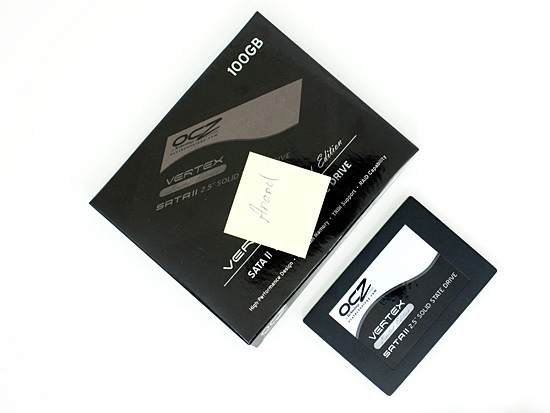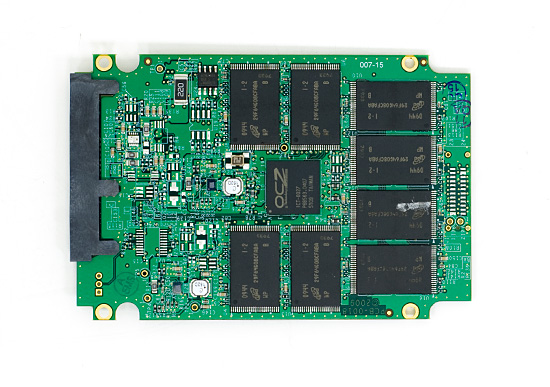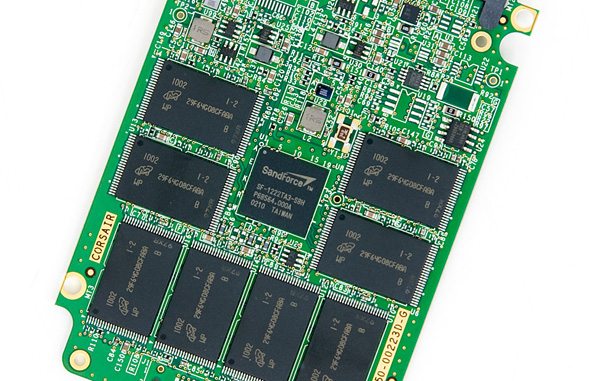Understanding SandForce's SF-1200 & SF-1500, Not All Drives are Equal
by Anand Lal Shimpi on April 16, 2010 11:30 AM ESTLess than 24 hours ago I was called into a meeting with SandForce, the SSD controller manufacturer that has been on fire lately. The company makes two controllers: the SF-1200 and SF-1500. The meeting was initiated by SandForce to clear up any misconceptions I might have about the differences between the two controllers. No good deed goes unpunished, and the quick meeting turned into an hour long debate about responsibility and ethics. It turns out that while I finally know the difference between the SF-1200 and the more expensive SF-1500, not all drives based on the SF-1200 will offer the same performance. In fact, some drives that are currently on the market will actually drop in performance (in one metric) if you upgrade them to SF’s mass production firmware. Yep.

SF-1200 vs. SF-1500
On SandForce’s site are two controller options: the SF-1500 intended for enterprise (server) customers, and the SF-1200 for client (desktop/notebook) SSDs. The first silicon ready was SF-1500, and a derivative version of that was used in the earliest drives (e.g. OCZ’s Vertex Limited Edition). More recently however we’ve seen SF-1200 based SSDs crop up, such as Corsair’s Force drive. In our recent review we found no performance difference between the Force drive and the Vertex LE, leading me to believe that there’s no tangible performance difference between the SF-1200 and SF-1500. However since then I’ve finally got a good handle on the differences directly from SandForce.

The SF-1500 controller from the original Vertex LE.
Let’s start with the obvious and what I suspected: there is no physical difference between the SF-1200 and SF-1500. It’s the same die. The difference between the two amounts to firmware, validation and settings on the chips themselves. It’s akin to Intel disabling Hyper Threading on the Core i5 750 but leaving it enabled on the Core i7 860; same die, different features.

The SF-1200 controller on Corsair's Force SSD. The chips are the same, it's all about firmware and settings.
As an enterprise class solution, the SF-1500 is designed to complete any writes in progress in the event of sudden power loss. The SF-1500 firmware is configured expecting the presence of the super cap we saw in the Vertex 2 Pro. As such it expects that it can write at full speed without any worries about power loss. In other words, it assumes you have power failure protection at the drive level.
The SF-1200 firmware on the other hand doesn’t assume the presence of a large capacitor to keep the controller/NAND powered long enough to complete all writes in the event of a power failure. As such it does more frequent check pointing and doesn’t guarantee the write in progress will complete before it’s acknowledged. It’s a subtle difference, but the SF-1500 with super cap may be necessary for some of SandForce’s enterprise customers.

The SF-1500's super cap, necessary because SandForce's controller keeps a couple of MBs of data buffered
Continuing the enterprise focus, the SF-1500 supports more SMART attributes and logging/debug/diagnostic features. SandForce wasn’t willing to elaborate on this point but said that it shares the SMART feature list with its customers under NDA. If this sort of thing might matter to you, sign a NDA with SandForce and they’ll apparently tell all.
As I pointed out in the Corsair Force review, SandForce rates the SF-1500 for a longer mean time to failure than the SF-1200. This is a basic binning/testing advantage. The SF-1500 goes through more tests and qualification than the SF-1200 allowing SandForce to guarantee higher reliability. That’s not to say that the SF-1200 won’t last as long as or longer than the SF-1500, it’s just that SandForce is willing to guarantee a longer lifespan on the SF-1500 than it is willing to do for the SF-1200. I poked fun at SF’s mean time to failure ratings in the Force review, however SandForce explained the MTTF is calculated across the entire population of controllers - not the lifespan of a single controller.
In a population of 10,000,000 controllers, with a rating of 10,000,000 hours, the probability is that 1 unit would fail in an hour. The SF-1200 would have 5 units fail in the same time. The failure probability drops as the number of controllers drops (SF won’t be shipping anywhere near 10M of these things).
While both the SF-1200 and SF-1500 support MLC NAND, the SF-1500 also supports SLC. This once again is more of an enterprise class feature as most desktop users aren’t willing to pay the 2x price premium of SLC vs. MLC NAND flash.
| SandForce Controller Comparison | ||||
| SF-1200 | SF-1500 | |||
| Flash Memory Support | MLC | MLC or SLC | ||
| Power Consumption | 550 mW (typical) | 950 mW (typical) | ||
| Sequential Read/Write Performance (128KB) | 260 MB/s | 260 MB/s | ||
| Random Read/Write Performance (4K) | 30K/10K IOPS | 30K/30K IOPS | ||
| Security | 128-bit AES Data Encryption, Optional Disk Password | 128-bit AES Data Encryption, User Selectable Encryption Key | ||
| Unrecoverable Read Errors | Less than 1 sector per 1016 bits read | Less than 1 sector per 1017 bits read | ||
| MTTF | 2,000,000 operating hours | 10,000,000 operating hours | ||
| Reliability | 5 year customer life cycle | 5 year enterprise life cycle | ||
So far none of these differences matter to a client user, but the last item on the list does. There’s a performance difference between the SF-1200 and SF-1500. The SF-1500 is capable of higher sustained small file random write speed. The SF-1200 is rated at 10,000 4K random write IOPS (sustained), while the SF-1500 is rated at 30K (sustained). This is purely a firmware limitation, but SandForce believes the 10K number is high enough for client PCs (Intel rates its X25-M G2 at 6.6K for the 80GB model and 8.6K for the 160GB model).
The controllers should otherwise perform the same, it’s only in small file random writes that there’s a difference (realistically speaking we’re talking random writes smaller than 16KB in size). SandForce notes the difference on its website, however in our testing of Corsair’s Force drive we showed absolutely no difference. So what’s going on?










81 Comments
View All Comments
bplewis24 - Friday, April 16, 2010 - link
It's pretty sad that one of the only places I can go to get real, actual (somewhat investigative) journalism and insight is a tech site. This is great stuff, Anand. Keep up the good work.Brandon
NGneer - Friday, April 16, 2010 - link
Just wondering if the last line on page 2 has a typo regarding MP vs RC or possibly I'm just confused."just slower than with the MP firmware and slower than OCZ’s Vertex 2."
Anand Lal Shimpi - Friday, April 16, 2010 - link
Woops, you're correct :) Fixed.Take care,
Anand
529th - Friday, April 16, 2010 - link
In an infant market segment, it seems Sandforce is trying it's best to get as much user feedback from their product stepping over their exclusive agreements. But it seems OCZ and Corsair are in the same boat with their SF1200 controlled SSD drives. It's basically a morality call from Sandforce that falls on some segment of end-users in order for a company to speed up the development of their firmware for their controllers in order to not fall behind in the best controller war. Q4 is right around the corner for Intel and while the 25nm chips will help even further push their proven conglomerate that makes up their SSD drive lets hope we have a few different companies that keep the prices competitive.cjl - Friday, April 16, 2010 - link
The comment in the article" In a population of 10,000,000 controllers, with a rating of 10,000,000 hours, the probability is that 1 unit would fail in an hour. The SF-1200 would have 5 units fail in the same time. The failure probability drops as the number of controllers drops (SF won’t be shipping anywhere near 10M of these things)."
is flawed in several ways. It assumes a linear failure rate (I.E. that your drive is just as likely to fail in the first hour as it is after 200,000 hours), and it assumes that 100% of drives will fail by the rated lifetime (in other words, in a population of 10,000,000, 1 will fail each hour and all will be dead at 10,000,000 hours). In reality, the failure distribution is quite different, usually with a higher failure rate in early life, a lower failure rate for most of the rated lifetime, and a rising failure rate again as you approach the MTBF.
To use the same example as above, if you had 10,000,000 drives, you would probably see more than one fail per hour in the first couple of weeks, followed by a much lower than 1 per hour failure rate once the initial ones had died. Then, when approaching the design lifetime, you would again begin to see the failure rate climb, with an expected 5,000,000 drives to be dead by the MTBF of 10,000,000 hours (assuming a somewhat symmetric failure distribution).
jasperjones - Friday, April 16, 2010 - link
"The failure probability drops as the number of controllers drops (SF won’t be shipping anywhere near 10M of these things)."Why should the probability be a function of the number of controllers? That doesn't make any sense.
taltamir - Friday, April 16, 2010 - link
probability is not affected by number of controllers, MTBF is a bullshit metric that means nothing at all... also check out the MTBF on spindle drives (1.5 million most common vs the 2 million and 10 million listed by sandforce, the smallest i have seen was 300 thousand hours (still it means decades))Ramesh Rawat - Friday, April 16, 2010 - link
Having visited AnandTech recently, and with my very poor limitations and knowledge in this field, more specifically about the technical evaluations done by Anand, I was and I cannot resist to thank this site for making me aware about SSD. Subsequently I am upgrading to Intel SSD purely because of the reviews of Anand ji.Thanks to Mr. Anand.
Ditiris - Friday, April 16, 2010 - link
This deserves an "attaboy." Thanks for alerting your readers, and please keep up the good work.Exodite - Friday, April 16, 2010 - link
Very interesting article.Like many others this is the kind of information that keeps bringing me back to Anandtech.
The question on my mind then would be if there's even any SF1500 drives shipping, or known to be planned?
As it seems to every SandForce-based drive on the market, or having been announced, either run the SF1200 (with or without high-performing firmware) or the limited run hybrid chip.
What pricing and performance differences can we expect?
If the main differences are mainly reliability and SLC support I see no reason to artificially limit performance of the SF1200, not that I'd ever support that anyway, as the benefits of the SF1500 would be mostly meaningless for consumers but still attractive for enterprise use.
Ah well, time will tell I suppose.